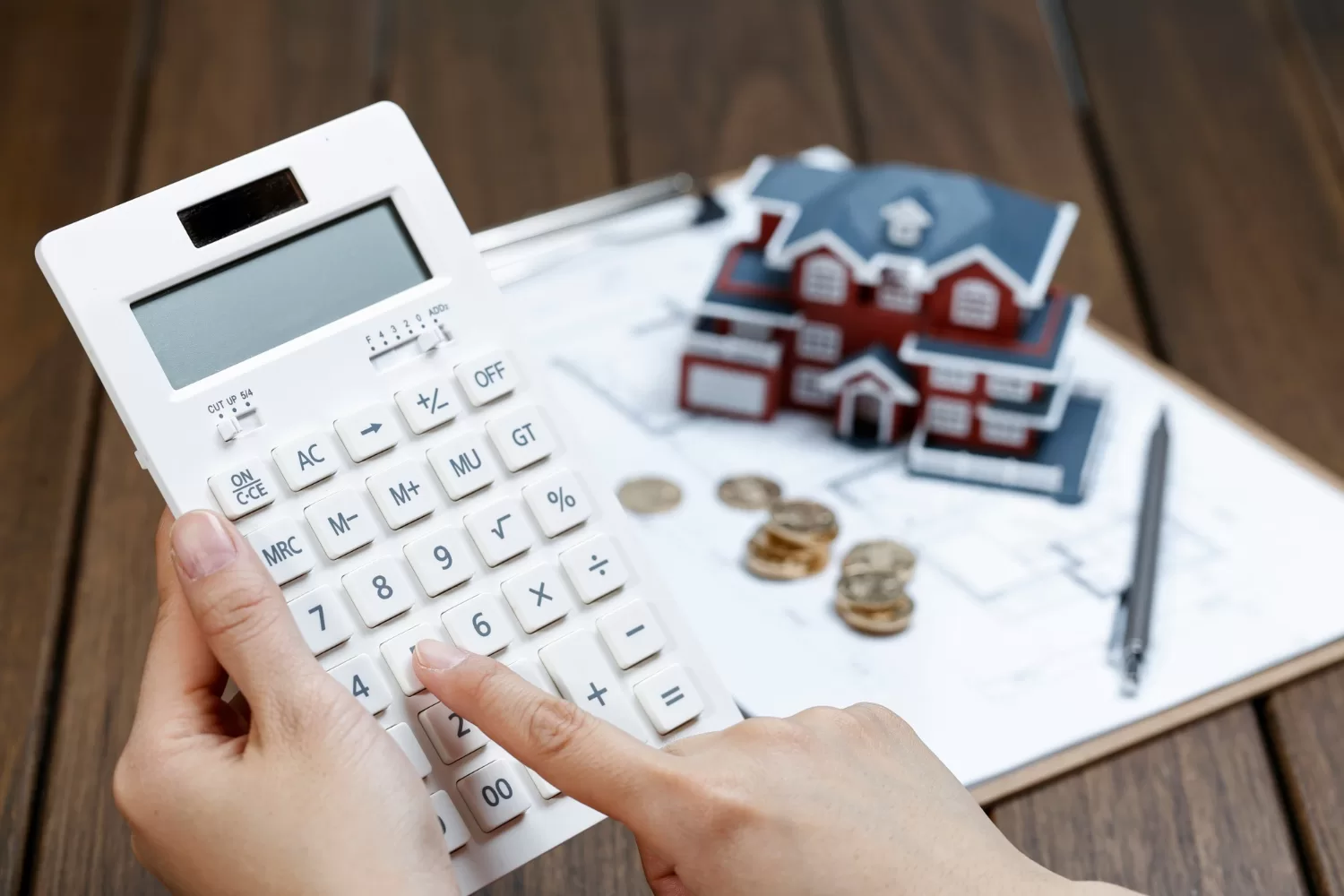One of the worst problems to encounter as a homeowner looking to sell is damp. Homeowners with damp problems often find themselves facing potential buyers exaggerating the issue in order to justify a lower offer. At the same time, they’re deciding between making repairs or selling the property as is, and whether either decision affects the value of their home.
In this article, we’ll discuss how much does damp devalue a house and how homeowners can secure the best outcome from a sale.
What Causes Damp in a House?
In order to understand where damp comes from, it’s important to distinguish the different types of damp. As a homeowner, you’ll likely encounter three common types of damp: rising damp, penetrating damp, and condensation.
Rising damp happens when moisture from the ground travels vertically through the walls of a building by capillary action. Penetrating damp is a result of water from a building’s exterior moving to its interior by penetrating the walls. And condensation occurs when water vapour becomes liquid due to a change in temperature.
Although each type of damp will manifest itself in different ways, there are common signs you can pay attention to. If you start to notice peeling paint or wallpaper, rotting floorboards or mould, these are some of the signs that your home has damp.
Does Damp Devalue a House?
Having damp problems in a house can be the source of various issues, resulting in the devaluation of your home. Both rising damp and penetrating damp can damage interior and exterior walls by eroding building materials, creating stains, causing peeling or bubbling wall coverings, and rotting wooden fixtures such as support beams and flooring. Not only does this ruin the appearance of the building, it compromises its structural safety, too. Condensation at its most severe can breed mould spores and degrade the air quality within the home, affecting inhabitants with respiratory problems such as asthma.
Dampness in a house is enough to affect the property’s market value; therefore resulting damage only contributes to its devaluation. In an attempt to salvage your home’s value, you may have to undergo expensive repairs, which might not be covered by your home’s insurance policy.
How Much Does Damp Devalue a House?
Determining how much does damp devalue a house will largely depend on how severe the damp is and how much damage it has already caused. It’s estimated that minor damp can devalue a house by up to 10 per cent. This number will only increase the longer the damp is left untreated and the more severe the damage becomes.
Serious damp that results in structural damage can see up to a 53 per cent reduction in property value. Therefore, it’s worth considering whether the cost of repairing damp problems in a house equates to or outweighs the property value that has already been lost or will be lost by leaving the damp untreated.
Is it Legal to Sell a House with Damp Issues?
In the United Kingdom, it is legal to sell a house with damp problems. However, sellers have a legal obligation to disclose damp problems in a house to prospective buyers. Given that severe damage from untreated damp can pose serious risks to the health and safety of occupants, imposing this duty is in the best interests of the general public. Although it seems easier to conceal signs of damp behind furniture or paint and wallpaper, doing so will only cause problems in the long-term. Failing to disclose this information will see sellers facing legal action, on top of the contract being terminated.
Does Damp Affect the Sale of a Property?
A house afflicted with damp can face serious challenges when undergoing a sale, not only in price but in overall sale processes too. As previously mentioned, damp and ensuing damage will reduce a house’s price, which will affect its value on the open market. Potential buyers will use this fact as a bargaining chip to negotiate a lower selling price.
Aside from viewing the property as a devalued commodity, buyers will also be looking to recover the costs of repairs for untreated damp problems in a house should they choose to purchase. It’s important to remember that dampness in a house will be seen as a problem that needs to be fixed. When considering a home with damp, buyers too will be weighing the cost of repairs against the consequences of not fixing it. Repairs are likely to be expensive, time consuming and overall inconvenient, restricting the available pool of buyers. Those who are still interested will be looking for a price reduction to compensate for their efforts.
Additionally, damp problems in a house can affect a buyer’s ability to secure a mortgage. A mortgage lender will more often than not require further investigation from a specialist surveyor. Some lenders will take into account the cost of work outlined in the surveyor’s report and offer a mortgage subject to retention. This is where a mortgage lender withholds a portion of a mortgage until the buyer has completed certain works on the property. As long as the buyer doesn’t reduce their offer, this is an ideal outcome for the seller.
In severe cases of rising damp, mortgage companies won’t lend and that means the seller will either need to carry out the work themselves or sell to a cash buyer. For a sale to a cash buyer, there will be a discount; sellers should expect between a 10 to 20 per cent reduction on market value, plus a discount for the cost of work. Yet, the alternative is to make the repairs. Buyers and sellers alike will be repelled by the idea of an extended sale, with limited mortgage options.
How to Sell a Property with Damp
Despite the possible issues that can arise during a sale, you may still be interested in selling a house with damp issues. In order to maximise your home’s value, you’ll need the advice of several experts. If you are aware or suspect that your house has damp, the first thing to do is contact a professional to conduct a damp survey. Aside from confirming the type of damp in your home and its severity, you’ll be presented with treatment options.
Based on this information, you can decide whether repairing those issues are worth your time and money. Alternatively, you’ll have a report with which you can explain damp problems in the house to prospective buyers, should you choose not to make any repairs. This can be used to negotiate a fair sale price.
At the same time, if facing dampness in your house and you’ve already seen some damage, it’s worth employing the services of a valuator. This serves a similar purpose, ensuring that you are able to negotiate a fair asking price. Hiring an estate agent with experience selling similar homes may also help to maximise your profits. They will do the work of marketing, negotiating and carrying out the sale on your behalf.
It sounds nonsensical to conduct repairs on a home that you no longer intend to live in. However, it may be your best option at securing a fair asking price, then recouping those costs during the sale. It’s likely that those repairs will cost less than the loss you would be selling your property for. If you choose this route, make the repairs before listing your home to reduce devaluation by staying on the market for too long and ensure a quick sale.
Selling at a loss may be an unavoidable outcome where you are unable to fund the repairs or struggle to find a buyer in your home’s current state. Where dampness in a house is severe and you aren’t able to complete repairs before selling, consider deducing the cost of repairs from your asking price. And in very severe cases, consider selling the property at auction.
Always remember that the more severe the damp problems in a house, the greater the concern for prospective buyers.
Treating a Damp Problem
The type of damp affecting the property will dictate available treatment options for damp problems in a house. Typically, treating rising damp involves installing a damp proof course (DPC) between the stonework of a house. A DPC, being made from different materials, will act as a barrier to groundwater travelling through the walls of the building. After installing this protective layer, repairs on flooring and walls can be carried out.
Rising damp is relatively simpler to treat because the source and the affected areas are clear. This is not the case with penetrating damp, as it can affect any part of the building and have different sources. For example, the source of penetrating damp may be the rain, therefore appropriate treatment would be to fix defects in the roof and walls. If the source is from faulty plumbing, treatment would require unclogging drains or repairing leaking pipes.
Conversely, if dampness in a house is the result of condensation, treatment is simple. Opening windows in areas of high humidity such as bathrooms and kitchens during and after use will significantly reduce water vapour. Installing ceiling fans and extractor fans or using a dehumidifier is an extra measure worth taking if opening windows does not resolve the problem.
Contact CS Damp Proofing Today
The best way to determine how much does damp devalue a house is with a damp survey conducted by a trained professional. Contact CS Damp Proofing at 01765 804050, or complete our contact form and find out how you can preserve the value of your house.

